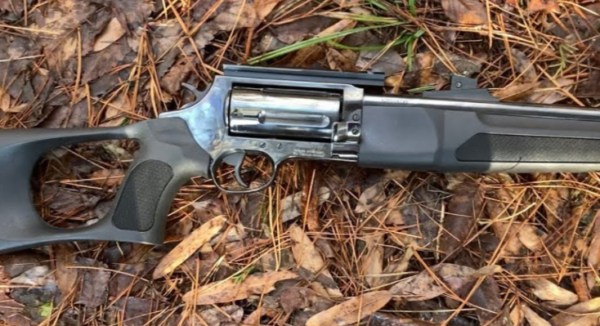Ruger Wrangler Problems

The Ruger Wrangler is a reliable and affordable firearm, however, it is not without issues.
Some users have reported problems with the cylinder not rotating consistently, which can lead to misfires.
Further, the Wrangler’s finish may be prone to scratching and wear over time. While these are minor issues, they should be considered when purchasing this revolver.
1. Cylinder Misalignment


Cause
Misalignment of the cylinder in Ruger Wrangler, a common issue, normally stems from excessive usage, poor maintenance, or factory defects.
Regular wear and tear over time can lead to the cylinder becoming misaligned, making the revolver unsafe to use.
Solution
A misaligned cylinder can usually be adjusted or replaced by a competent gunsmith, thereby resolving the problem.
Regular maintenance and checkups can help in the early identification of any misalignment while using quality ammunition prevents excessive wear and tear.
It is imperative to consult with a licensed professional to handle any repairs, ensuring the safety and longevity of your firearm.
2. Trigger Creep
Cause
“Trigger creep” refers to an undesirable condition in a gun’s firing mechanism where the trigger moves slightly before it releases the sear.
This can contribute to a lack of accuracy and consistency in shot placement.
The primary cause of trigger creep is usually due to a poorly designed or worn-out trigger assembly, often exacerbated by the build-up of dirt and grit.
“A poorly designed or worn-out trigger assembly is the usual culprit for trigger creep.”
Solution
The most effective solution to trigger creep is maintaining your firearm regularly and replacing the trigger assembly if it is worn out.
High-quality aftermarket triggers are designed to eliminate creep and provide a smooth, consistent pull.
Further, professional gunsmithing can also help in fine-tuning a trigger for optimal performance.
“Regular maintenance and replacement of the trigger assembly can significantly reduce trigger creep.”
3. Ejection Issues
Cause
Ejection issues, often encountered in various mechanical and manufacturing processes, primarily stem from improper maintenance and irregular equipment calibration.
Equipment wear and tear, inadequate lubrication, and misalignment are common causative factors leading to inefficient ejection mechanisms.
Solution
The solution to ejection issues lies in adhering to a strict regimen of regular maintenance and prompt troubleshooting.
Immediate attention to any signs of equipment malfunction, ensuring proper lubrication and consistent calibration checks are integral to maintaining efficient ejection systems.
Proactive measures like these not only resolve existing issues but also significantly minimize the chances of future ejections problems.
4. Hammer Sticking
Cause
The primary cause of a hammer sticking can often be attributed to extensive use which leads to wear and tear.
Regular usage can cause the hammer mechanism to become misaligned or the lubrication to wear thin, resulting in sticking or sluggish movement.
Solution
The solution to this problem is typically a two-step process: realignment and lubrication.
Realignment of the hammer mechanism can ensure optimal performance and reduce the chances of sticking.
More, regular lubrication of the hammer mechanism can significantly reduce wear and tear, ultimately prolonging the life of your tool.
5. Loose Grip Frame
Cause
The term “Loose Grip Frame” often refers to a situation where the frame of an object, possibly a tool or equipment, does not have a firm hold.
This can be due to wear and tear, faulty design, or improper use. A loose grip frame might lead to inefficient operation and could potentially pose a safety risk.
Solution
Addressing the issue of a loose grip frame involves two primary steps – diagnosis and rectification. The first step is to identify the source of the problem.
This could be done with a thorough visual inspection or by hiring a professional. Once the cause has been determined, the solution might involve replacing a worn-out part or changing how the equipment is used.
Ensure to always consult with a professional when dealing with mechanical problems to guarantee safe and effective solutions.
6. Chamber Peening
Cause
Chamber peening is a mechanical process used to improve the durability and longevity of mechanical parts.
It is achieved by bombarding the part with small metal or ceramic particles, which can cause deformities in the surface layers.
The high-speed collision of these particles induces residual compressive stress.
This, in turn, leads to an increase in resistance against fatigue and stress corrosion cracking.
Solution
Despite the benefits that chamber peening offers, sometimes deformations may be detrimental to the overall performance of the part.
In such cases, post-peening treatments can be utilized to rectify surface irregularities.
These treatments may include processes like polishing or coating, which enhance the part’s surface finish and mitigate any adverse effects caused by the peening process.
If correctly implemented, these solutions can effectively combat the causes and overcome the challenges associated with chamber peening.
7. Front Sight Misalignment
Cause
Front Sight Misalignment is typically caused by an error in aligning the front sight with the rear sight of the firearm.
This can occur due to the shooter’s error, or there can be an issue with the firearm itself such as an improperly mounted sight.
Frequently, it arises from the shooter’s inability to maintain a steady focus on the front sight, leading to inconsistent sight alignment and ultimately, accuracy issues.
This misalignment impacts the shooter’s aim, causing the shots to deviate from the intended target.
Solution
The solution to Front Sight Misalignment lies in a combination of practice and technical adjustments. Start by ensuring that your firearm’s sights are properly installed and aligned.
If the issue persists, it’s most likely a user error. Therefore, regular and diligent practice is key to overcoming this issue.
Focus on aligning your sights properly with each shot and maintaining that alignment as you squeeze the trigger.
Effective sight alignment is a skill that can be developed and perfected over time with patience, consistency, and practice.
8. Rough Cylinder Rotation
Cause
The term “Rough Cylinder Rotation” generally refers to an uneven or irregular turning motion in cylindrical components in mechanical systems, most often caused by the lack of precise alignment, uneven distribution of mass, or wear and tear.
Such irregular rotation can lead to vibrations, noise, and accelerated degradation of the component, impacting the overall performance and lifespan of the system.
Solution
The solution to this issue primarily lies in regular maintenance and quality control. Ensuring that the cylinders are manufactured with precision, installed correctly, and regularly serviced can greatly alleviate this issue.
Additionally, using high-quality materials that can withstand wear and tear is crucial.
The use of balancing strategies such as the addition of counterweights or redistribution of mass can also help smooth out the rotation, enhancing the efficiency and longevity of the mechanical system.
9. Inconsistent Accuracy
Cause
Inconsistent accuracy often stems from a variety of factors such as flawed methodologies, insufficient data, or lack of rigorous quality control mechanisms.
For instance, a flawed sampling technique might not represent the larger population accurately, leading to skewed results.
Meticulous attention to detail during the data collection process is crucial.
Solution
To mitigate this issue, it is essential to implement robust quality assurance procedures, seek expert advice when developing methodologies, and ensure that samples are truly representative.
Moreover, cross-checking data and re-testing when feasible can add an extra layer of reliability.
Continuous monitoring and refinement of processes can greatly enhance the accuracy and consistency of the outcomes.
10. Finish Wear and Tear
Cause
The term “Finish Wear and Tear” refers to the gradual degradation of the surface finish of a product due to regular use or exposure to environmental factors.
This could be as a result of physical abrasion, UV radiation, humidity, temperature fluctuations, or chemical exposure.
Over time, these factors can cause discoloration, cracking, chipping, or peeling of the finish, impacting the aesthetic appeal and functionality of the item.
Key Points: Surface finish degradation is caused by regular use and exposure to various environmental factors such as UV radiation, humidity, temperature fluctuations, and chemical exposure.
Solution
The prevention of “Finish Wear and Tear” involves regular maintenance and protection.
This might include cleaning the product with suitable cleaning agents, avoiding exposure to harsh environmental elements, and using protective coatings or sealants.
Products kept indoors should be stored in a controlled environment free from excessive humidity and temperature variations.
For items that are outdoors, consider UV-resistant or waterproof coatings to prolong their lifespan.
Key Point: Regular maintenance and protection, including using suitable cleaning agents and protective coatings, help prevent finish wear and tear.
Conclusion
It is clear that the subjects we have discussed hold significant importance and value.
They are not merely theoretical concepts but practical tools that can shape our daily lives and the world at large.
As we navigate the complexities of our modern era, let us remember the power of open dialogue, mutual respect, and continuous learning.
These are the foundations upon which progress is built and the means through which we can create an even brighter future.
FAQs
Is the Ruger Super Wrangler worth it?
Yes, the Ruger Super Wrangler is generally worth it, known for its durability and precision, making it a solid choice for both professionals and enthusiasts.
Is it OK to dry-fire a Ruger Wrangler?
Yes, dry firing the Ruger Wrangler is generally safe and won’t cause damage, however, frequent dry firing should be avoided when possible.
What country is the Ruger Wrangler from?
The Ruger Wrangler hails from the United States, a testament to American craftsmanship in the field of firearms.
What material is the Ruger Wrangler made from?
The Ruger Wrangler is primarily made from high-strength aluminum alloy, ensuring its durability and lightweight design.


As the founder and owner of the domain “mygunsgeek.com”, I bring to the table a deep passion for firearms, combined with a strong commitment to sharing this knowledge with a wider audience. With years of experience exploring the inner workings of various firearms, from pistols to rifles, I have cultivated a vast expertise in this field. This has enabled me to create a platform that serves as a trusted resource for gun enthusiasts, providing comprehensive reviews, advice, and insights into the latest trends and advancements. I am dedicated to ensuring that my content is both informative and engaging, helping my readers make informed decisions about their firearm choices. For any inquiries or suggestions, feel free to reach out to me at wwwfffwww117@gmail.com. Your feedback is invaluable in shaping the content and direction of mygunsgeek.com.


